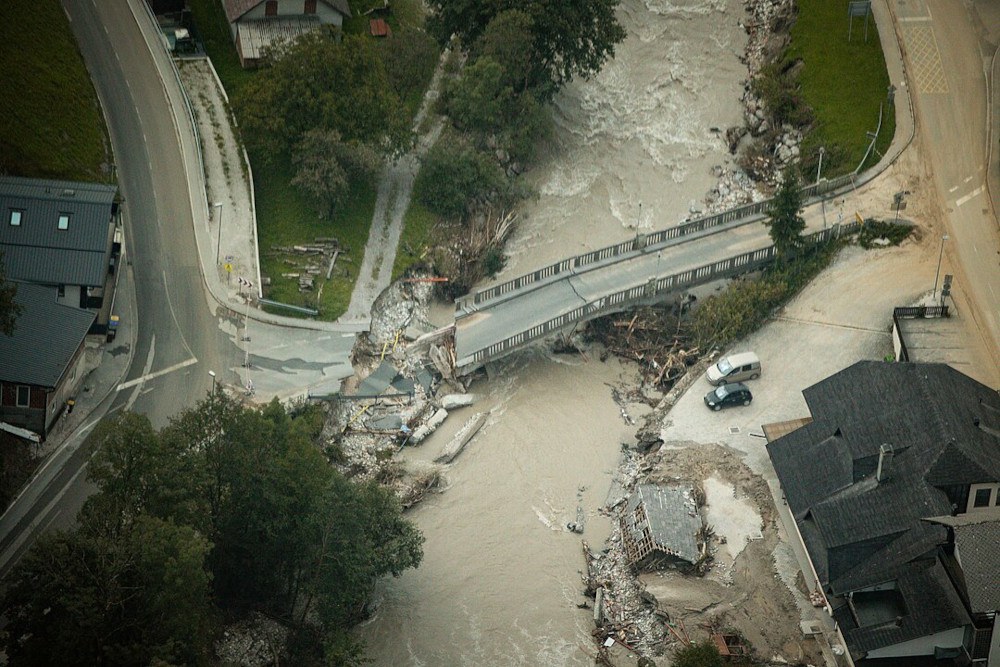News
Flooded mountains
Brown floods, destroyed bridges, landslides in residential areas: in early August 2023, news channels around the world reported on the days of heavy rain that devastated large parts of Slovenia and southern Austria, claiming several lives. In the north of Slovenia it rained as much in 24 hours as it usually does during an entire month – amounts that surpassed even the worst scenarios predicted by experts. International relief forces from NATO and the EU had to help. NGOs such as Umanotera, the Slovenian Foundation for Sustainable Development, criticised the Slovenian government for failing to take preventive measures against the effects of climate change over the last years. In July, meanwhile, the largest hailstones ever recorded had fallen in northern Italy. If heavy rainfall occurs more often and lasts longer, it will also trigger more landslides or can exacerbate existing instabilities. According to researchers, the climate crisis acts as an additional amplifier for such natural disasters. In addition, the thawing of high-alpine permafrost soils makes landslides like the one seen on the Fluchthorn/A in summer 2023 more likely. “We have to learn how to cope better with these multiple climate risks”, says project leader Wolfgang Pfefferkorn of CIPRA International. Launched in 2023 with CIPRA participation, the multi-year MultiBios project is conducting a comprehensive analysis of the resilience of biosphere parks in Austria, Germany and Switzerland under the leadership of the Austrian University of Natural Resources and Applied Life Sciences. In doing so, it is incorporating the views of relevant stakeholders from the fields of science, politics and practice. The research results should also benefit other mountain regions.
Sources and further information:
https://edition.cnn.com/2023/08/07/europe/slovenia-floods-intl/index.html (en), www.gov.si/en/news/2023-08-07-worst-natural-disaster-hit-slovenia/ (en), https://sl.wikipedia.org/wiki/Poplave_v_Sloveniji_(2023) (sl), www.umanotera.org/novice/izjava-ob-najhujsih-poplavah-v-zgodovini-slovenije/ (sl), www.24ur.com/novice/slovenija/ste-prepricani-da-ne-zivite-na-poplavnih-obmocjih.html (sl) https://edition.cnn.com/2023/07/20/europe/italy-hail-extreme-weather-climate-intl/index.html (en), https://kaernten.orf.at/stories/3219961/ (de), www.rainews.it/video/2023/08/valle-daosta-frana-in-valtournenche-ecco-le-immagini-della-colata-di-fango-a-singlin-b28fab71-6e17-4167-8dea-99496324e9a7.html (it), www.derstandard.at/story/3000000181096/warum-hagel-haeufiger-und-heftiger-wird (de), www.tagesschau.de/wissen/klima/mittelmeer-temperatur-100.html (de), https://tirol.orf.at/stories/3212018/ (de), www.tagesschau.de/wissen/klima/bergrutsch-permafrost-100.html (de)




